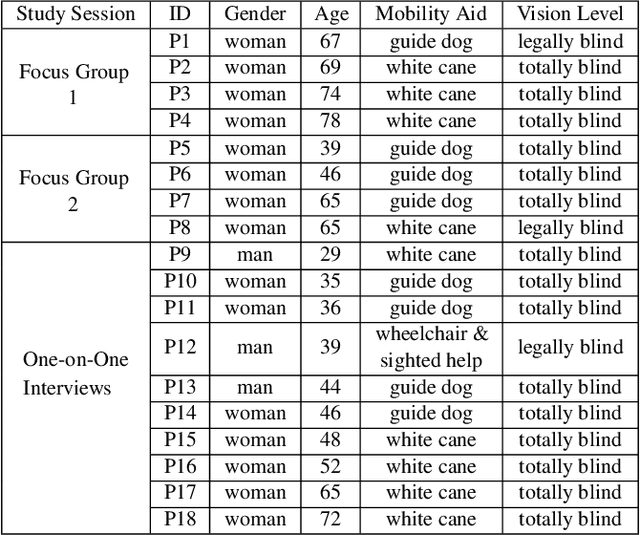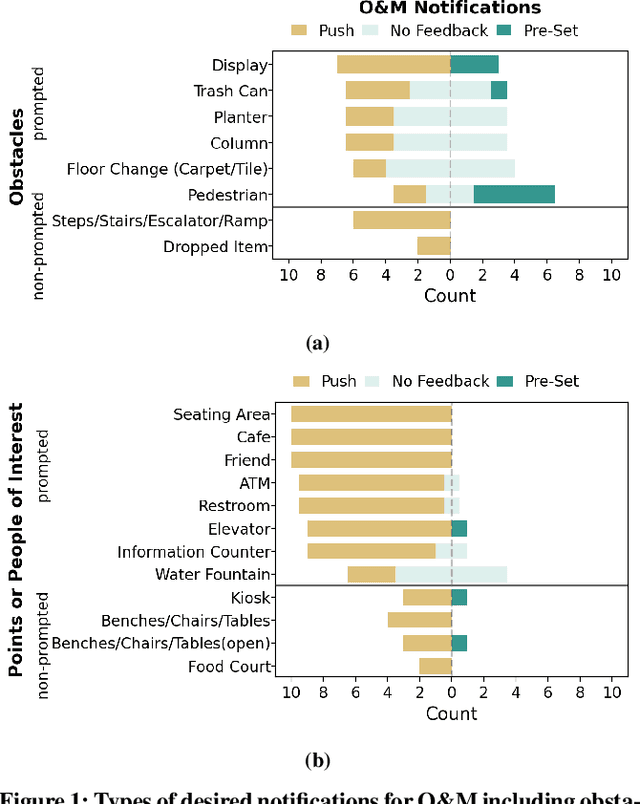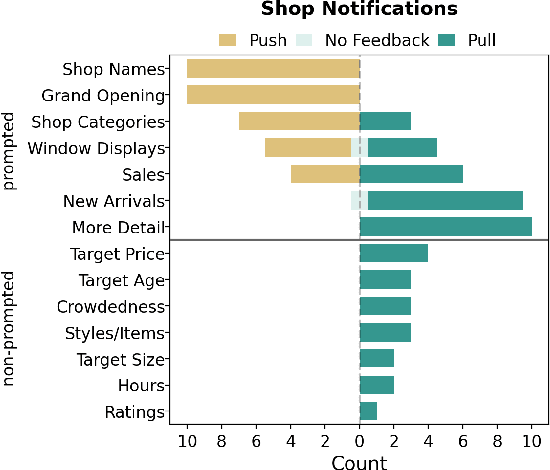"We are at the mercy of others' opinion": Supporting Blind People in Recreational Window Shopping with AI-infused Technology
Paper and Code
May 10, 2024


Engaging in recreational activities in public spaces poses challenges for blind people, often involving dependency on sighted help. Window shopping is a key recreational activity that remains inaccessible. In this paper, we investigate the information needs, challenges, and current approaches blind people have to recreational window shopping to inform the design of existing wayfinding and navigation technology for supporting blind shoppers in exploration and serendipitous discovery. We conduct a formative study with a total of 18 blind participants that include both focus groups (N=8) and interviews for requirements analysis (N=10). We find that there is a desire for push notifications of promotional information and pull notifications about shops of interest such as the targeted audience of a brand. Information about obstacles and points-of-interest required customization depending on one's mobility aid as well as presence of a crowd, children, and wheelchair users. We translate these findings into specific information modalities and rendering in the context of two existing AI-infused assistive applications: NavCog (a turn-by-turn navigation app) and Cabot (a navigation robot).
 Add to Chrome
Add to Chrome Add to Firefox
Add to Firefox Add to Edge
Add to Edge